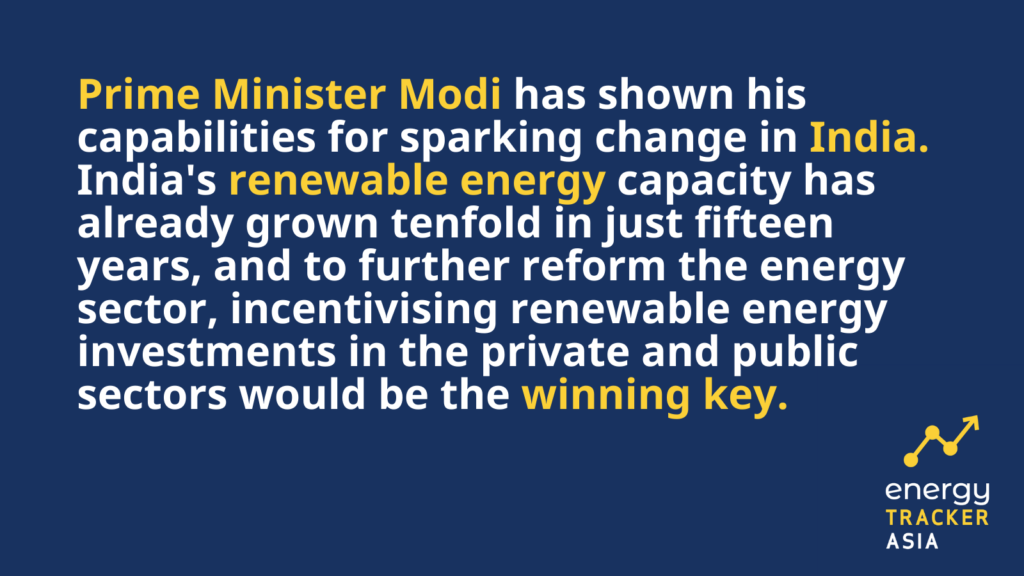India After COP26: Tackling Coal Dependence Head On
Source: Indian Express
09 December 2021 – by Eric Koons Comments (0)
As the world negotiated another climate agreement, Glasgow Climate Pact, at COP26, India stressed the differences between developing and developed countries commitments. Despite the rhetoric, Narendra Modi, India’s Prime Minister, committed to a decarbonisation path for India’s economy by 2070. Phasing out unabated coal power will be a game-changer in fighting climate change.
COP26 – India was Less Ambitious
While commendable, whether or not India could meet the five pledges made by Modi came under question. India further muddied the waters by pushing for a less ambitious agreement to phase-out coal. Instead, representatives from India opted for language that supported “phasing-down” coal at the Climate Change Conference. While it is clear that renewable energy will play an increasing role in India, coal, for now, is here to stay as far as India is concerned. Needless to say that phasing out coal is necessary to fight climate change, curb greenhouse gas emissions and achieve net-zero emissions.
India’s Economy Linked with Coal – like Many other Developing Countries
India is one of the most climate-vulnerable countries. India’s energy demands are steadily increasing, even more so as the second most populous nation in the world grows. As India has brought hundreds of millions out of poverty over the decades, reliable access to energy has been vital. If it wants to continue to do so, energy demand will, once again, follow. At this point, like many other developing countries, the Indian government appears to believe that coal is an immediate solution to this conundrum. Today, coal accounts for over 70% of India’s energy mix.
Coal, for India, plays an integral part in its economy. Nearly 4 million Indian citizens work in the coal sector, and close to 40% of India’s districts are partially dependent on coal. This would partly explain India’s doubling down on its Climate Change Conference COP26 commitment to “phase-down” rather than “phase-out” coal.

Fossil Fuel Subsidies by India – Not good to Limit Global Warming
Mapping India’s Energy Subsidies 2021 report suggests that fossil fuel subsidies have increased, in recent years, while subsidies for renewable energy have decreased. Fossil fuel subsidies, especially in poor countries, are a hurdle in fighting the climate crisis.
India’s Energy Grid is a Major Hurdle for Renewable Energy
While the country’s economic dependence on coal and fossil fuels is a significant hurdle, renewables’ effective development and deployment are too. Unlike fossil fuel, renewables are much more variable and unpredictable.
This is a challenge for India’s energy grid, which primarily consists of unconnected regional systems. For the most part, the regional grids cannot coordinate and move surplus energy across provincial lines. For renewables to completely replace fossil fuels, the grid will need to undergo a massive and expensive overhaul.
Modi’s Energy Transition from Fossil Fuels to Renewable Energy
With his power, dominance, and national popularity, Prime Minister Modi can reform the energy sector. While not being cheap or quick, it is manageable. Crucial to reform, though, would be to incentivise renewable energy investments in the private and public sectors. This would also include the all-important private investment from domestic sources.
Modi, so far, has shown that his capabilities for sparking change are there. India’s renewable energy capacity has already grown tenfold in just fifteen years, the fastest transition in the world. If these trends continue, the country will win to secure clean energy for its future and people.

Why India’s COP26 Target is Achievable
India has the means and ability to achieve its COP26 goals. But it must start working on them with a sense of urgency. It is unrealistic, as its leadership agrees, to eliminate coal immediately. However, investing in local renewable energy production is vital. Leveraging present coal consumption and diverting investments from coal into renewables, India can gain a firm foothold in the clean energy transition to achieve its bold net-zero by 2070 pledge.

by Eric Koons
Eric is a passionate environmental advocate that believes renewable energy is a key piece in meeting the world’s growing energy demands. He received an environmental science degree from the University of California and has worked to promote environmentally and socially sustainable practices since. Eric’s expertise extends across the environmental field, yet he maintains a strong focus on renewable energy. His work has been featured by leading environmental organizations, such as World Resources Institute and Hitachi ABB Power Grids.
Read more

